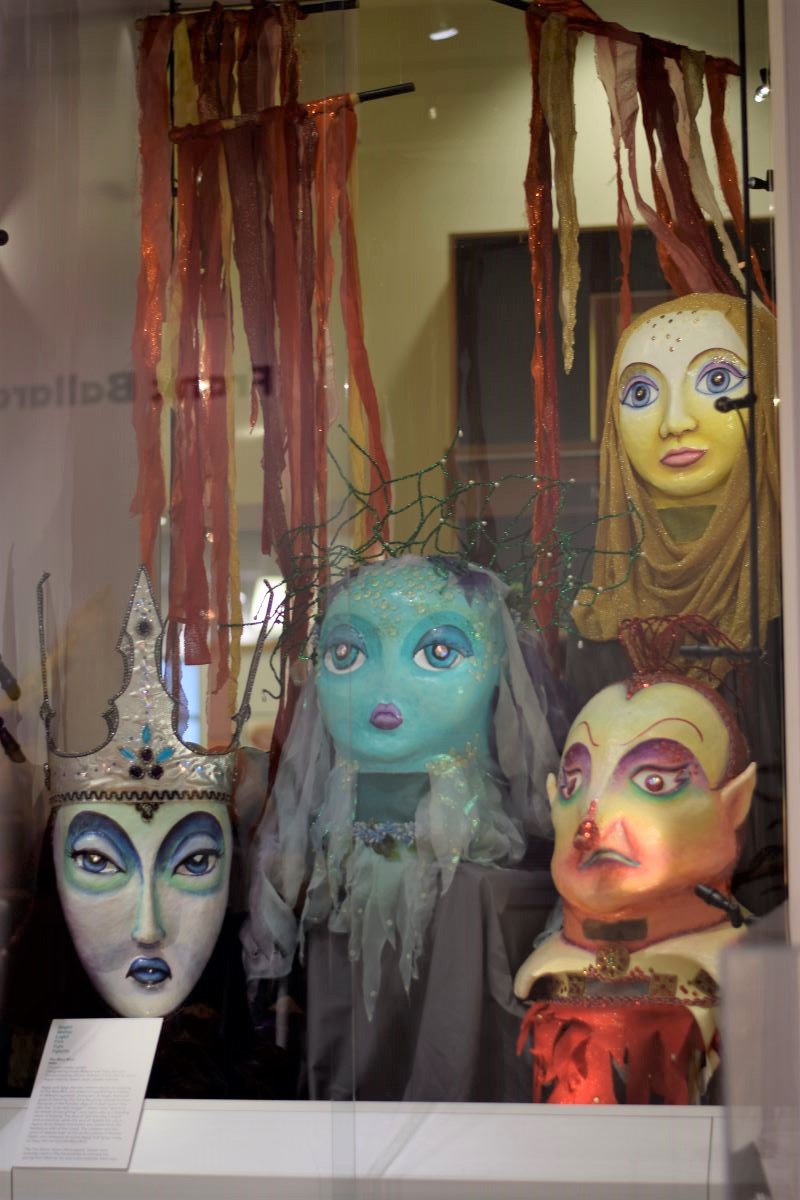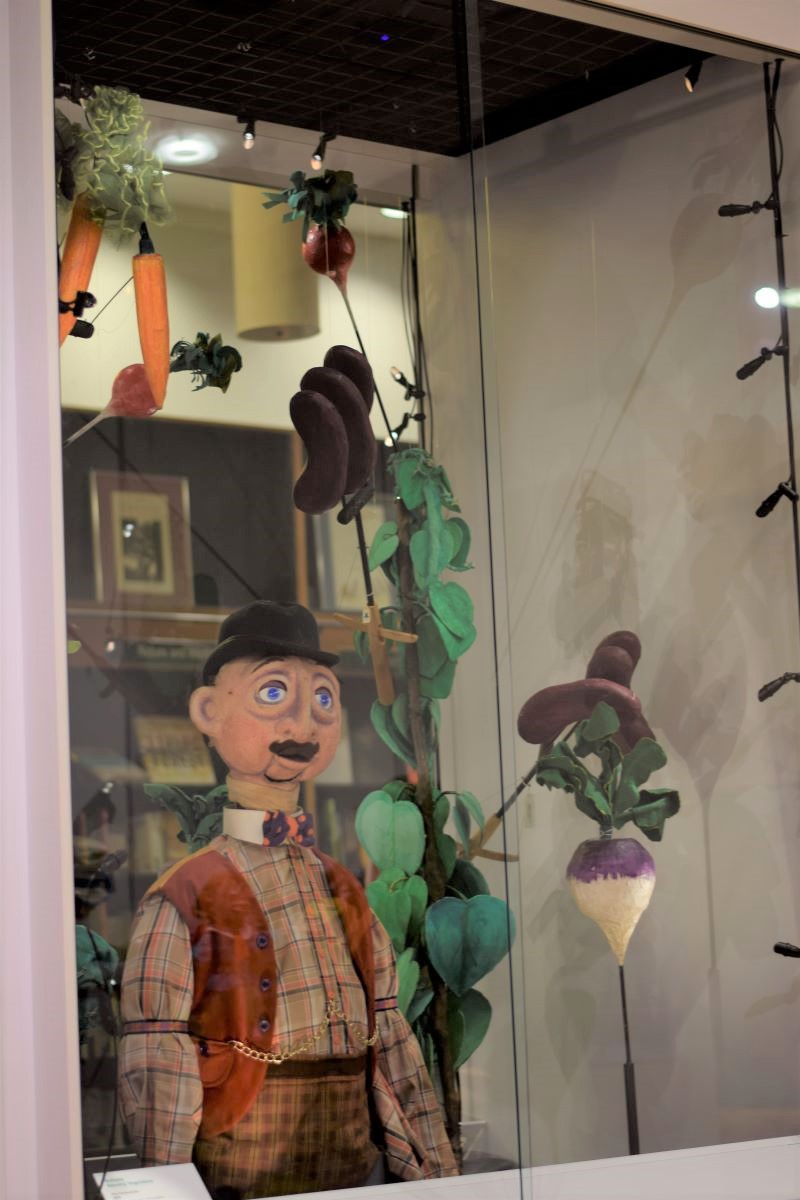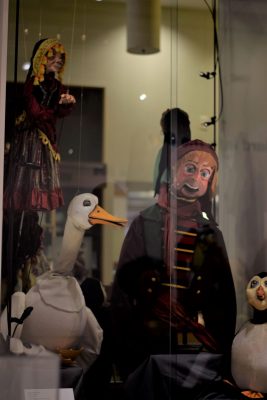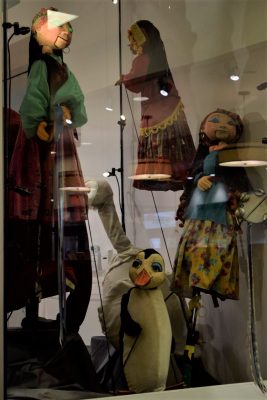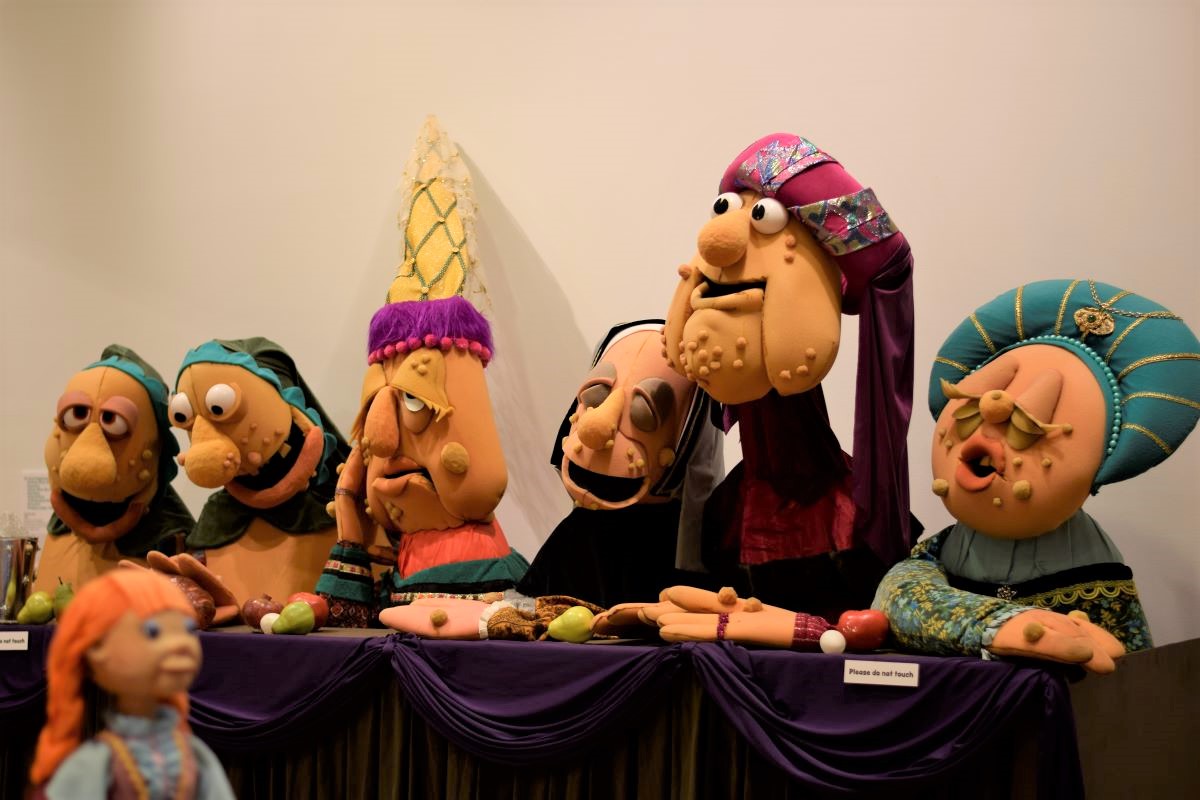July 14, 2018-October 7, 2018
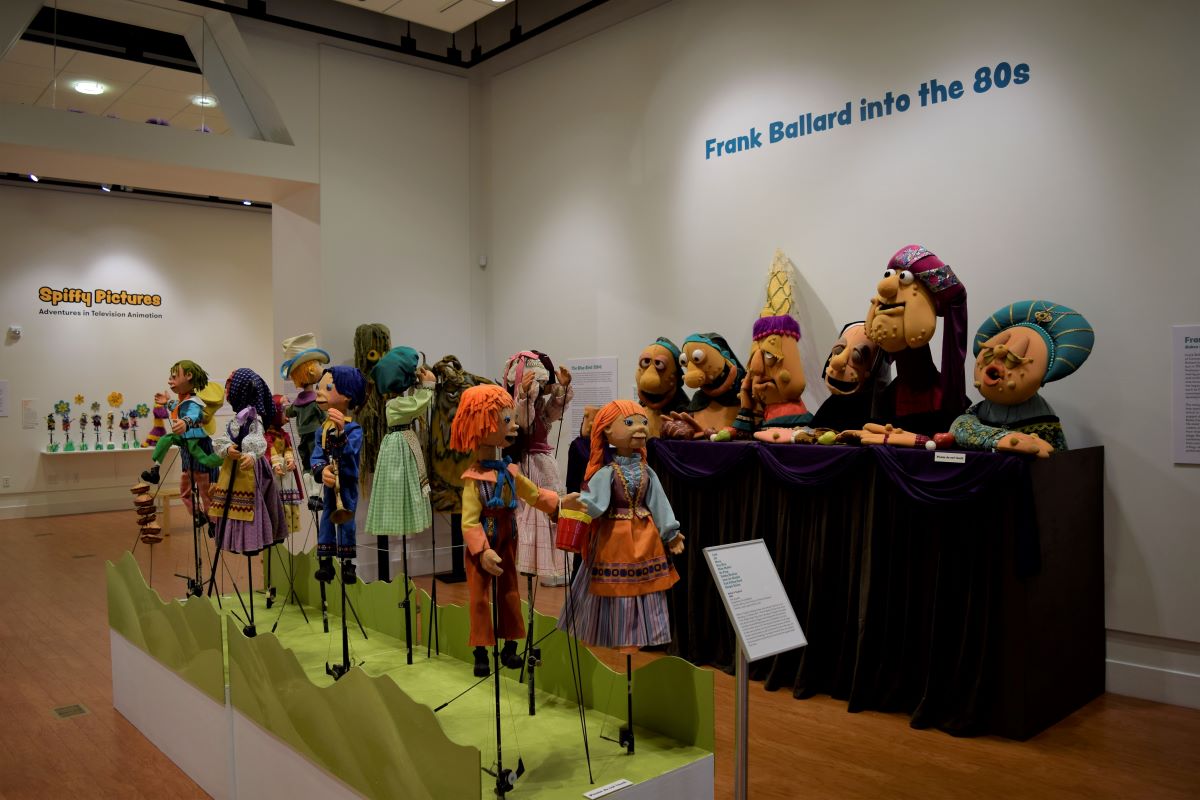
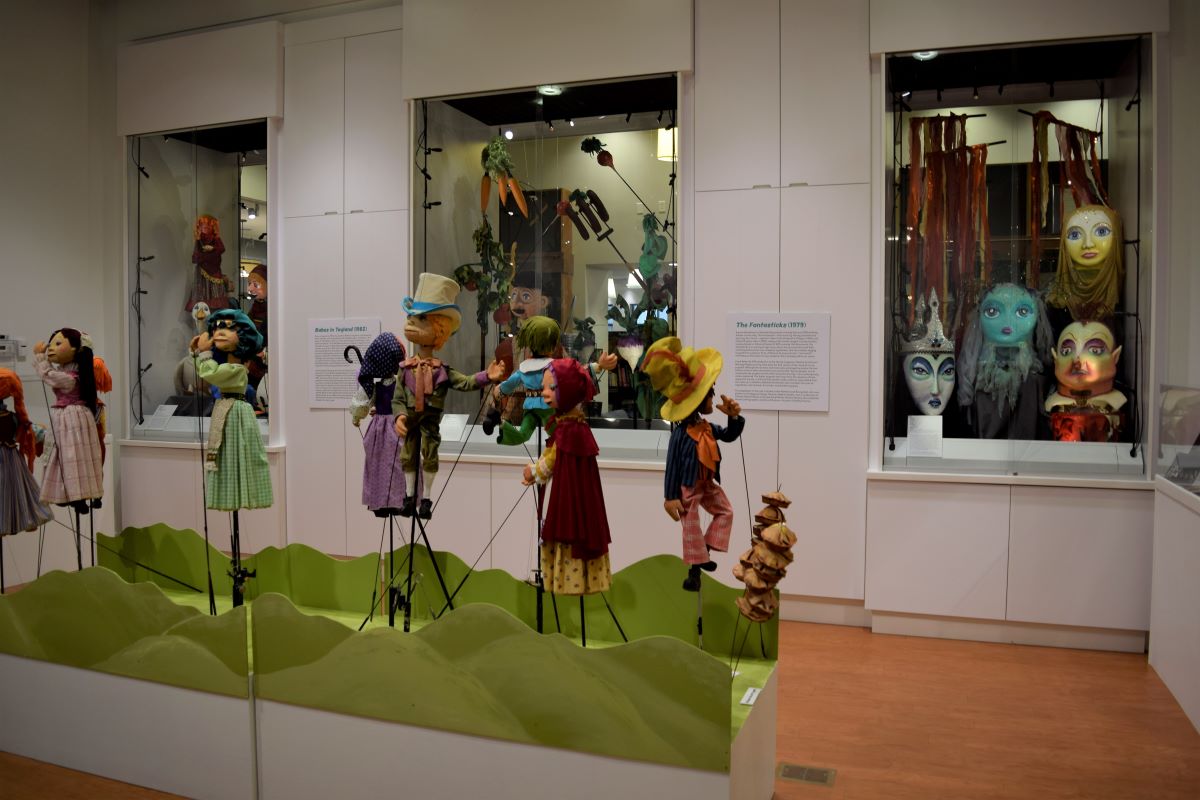
Frank Ballard into the 80s: Babes in Toyland, The Blue Bird, and The Fantasticks
Frank Ballard (1929-2010) worked tirelessly for 34 years at the University of Connecticut as a puppeteer, designer, director, teacher, and mentor. Ballard joined UConn in 1956 as a set designer and technical director, but in 1965 he began what has became the Puppet Arts Program. Professor Ballard and his students designed, built, and performed over twenty puppet productions at UConn, beginning in 1968 with The Mikado and ending with H.M.S. Pinafore in 1989, just before his retirement, which was brought on by the onset of Parkinson’s disease. Ballard’s work and the legacy of his program has made it possible for UConn students--such as David Rudman and Todd Hannert, whose work is featured in our accompanying Spiffy Pictures exhibition--to play essential roles in the development of puppetry around the world.
The many puppet shows Frank Ballard created from his childhood to his late teens were performed almost exclusively with string marionettes, which in the early 20th century were considered the highest form of puppet artistry. However, after he created the Puppet Arts Program, Ballard began to experiment with newer techniques including rod puppets, life-sized figures, and masks; and new puppet materials such as foam rubber, cloth, polyurethane, fiberglass, and plastic. In addition, different from traditional puppet shows which hid performers behind the puppet stage, Ballard began to create “Puppets and People Productions” that combined actors and puppets together onstage. The three shows featured here each reflect these innovations: the central characters--a girl and a boy--are played by costumed actors, while the supporting roles are performed with masks, rod puppets, mouth puppets, or shadow figures.
The Fantasticks (1979)
A groundbreaking and fantastically popular comedy that put Off-Broadway theater on the map, The Fantasticks--with music by Harvey Schmidt and lyrics by Tom Jones--opened in New York’s Greenwich Village in 1960, and closed 42 years later, in 2002, making it the world's longest-running musical. Loosely based on Edmond Rostand’s 1894 comedy The Romancers, The Fantasticks is a coming-of-age story about two young lovers and their scheming fathers that uses metaphor, symbolism, and non-realistic staging to guide the audience from childhood fantasy into the “real world,” reminding us that what is truly needed in life is already within our reach.
Frank Ballard’s 1979 production at the Harriet Jorgensen Theatre for UConn’s Nutmeg Playhouse may have been the first version of the musical to use puppets. Although the narrator and lovers were portrayed by actors, the two fathers and two other characters were performed “by two people, one to manipulate the puppet and the other to speak and sing,” as a contemporary review explained. The father puppets were seen from the windows of their respective houses, or behind their garden walls, and thus only existed from the waist up. In addition, Ballard’s production also included choruses of vegetables, wild animals, fire sticks, and shadow puppets.
The puppeteers in the cast included Jamie Keithline and Bonny Hall, who now perform as Crabgrass Puppet Theatre; Stephen Kaplin, now a co-director of Chinese Theatre Works and Great Small Works; Richard Termine, the acclaimed theater photographer; and David Rudman, founder of Spiffy Pictures.

Bellomy
Dancing Vegetables
The Fantasticks
1979
Torso puppet and rod puppets
Designed by Frank Ballard
Constructed by UConn School of Fine Arts Students
Celastic, wood, paper-mâché
The mustachioed gentleman here--Amos Babcock Bellomy--is the father of young, love-struck Luisa. He conspires with his neighbor Hucklebee (the father of Matt, Luisa’s inamorata) to marry their children together. In Frank Ballard’s production, the two fathers sing “Plant a Radish” as the rod puppet vegetables in Bellomy’s garden dance. The fathers agree that their offspring are unpredictable: as Tom Jones’ lyrics put it: “with children / it’s bewilderin’ / you don’t know until the seed is nearly grown / just what you’ve sown.” Vegetables, on the other hand, are reassuringly constant: “plant a carrot, / get a carrot, / not a brussel sprout. / That’s why I love vegetables, / you know what you’re about!”
Babes in Toyland (1982)
When it opened in 1903, the operetta Babes in Toyland--composed by Victor Herbert, with a libretto by Glen MacDonough--followed on the heels of The Wizard of Oz in “a new trend of glitz and fantasy in the American theater,” as Frank Ballard later put it. Babes in Toyland ran for 192 performances on Broadway and inspired many successful tours and revivals, as well as a 1934 Laurel-and-Hardy movie, a 1954 adaptation featuring Bil Baird’s marionettes, and a 1961 Walt Disney film. The musical focuses on siblings Alan and Jane and their wicked Uncle Barnaby, who is trying to collect their inheritance. Pursued by the uncle’s nefarious henchmen Roderigo and Gonzorgo, the siblings seek refuge in Toyland, where they encounter familiar nursery rhyme characters--including Mother Goose, Red Riding Hood, Jack Be Nimble, Miss Muffet, and Bo Peep--as well as the Toymaker’s demonically possessed creations.
Inspired by the Disney and Laurel and Hardy films as well as the original production, Frank Ballard adapted Babes in Toyland for a large-scale “Puppets and People” production at UConn’s Nutmeg Theatre in November 1982, featuring 29 performers, nine musicians, and over 60 masks, rod puppets, and moving-mouth puppets. Five main characters were represented by actors, working downstage of a 42”-tall playboard behind which puppeteers performed the majority of the characters. Ballard’s creations were made from a variety of new puppet materials, including polyurethane foam, celastic, plywood, and styrofoam, as well as the more traditional paper mâché. Many of the puppets were built by David Rudman (whose work with Spiffy Pictures is the subject of our accompanying exhibition), a second-year Puppet Arts student who had already been puppeteering with Jim Henson’s Muppets for over a year.
Jack
Jill
Mary
Boy Blue
Miss Muffet
Bo Peep
Bobby Shaftoe
Jack-be-Nimble
Red Riding Hood
Simple Simon
Babes in Toyland
1982
Rod puppets
Designed by Frank Ballard
Constructed by UConn School of Fine Arts Students
Celastic, wood, paper-mâché, cloth
Babes in Toyland‘s sibling heroes Jane and Alan flee their uncle Barnaby--a “wicked miser”--first for Mother Goose Land, where on the Village Green they meet a panoply of fairytale characters who dance around a maypole, and display their characteristic activities: Jack-be-Nimble jumps over a candlestick, and Jack and Jill tumble down a hill. The fairytale characters are all eager to help Jane and Alan, but are a bit stressed because of Mother Goose’s erratic behavior and the imminent arrival of Barnaby and his henchman Roderigo. The celastic heads of these rod puppets feature moveable mouths that can move when the puppets speak their lines.
Marmaduke
Roderigo
Floretta
Two Gypsy Dancers
Two Penguins
Babes in Toyland
1982
Rod, hand, and torso puppets
Designed by Frank Ballard
Constructed by UConn School of Fine Arts Students
Polyfoam, wood, celastic, paper-mâché, cloth
These are some of the over 60 characters that Babes in Toyland’s heroes--Jane and her brother Alan--meet in their travels. In this fantastical and fast-moving fantasy, the two siblings are pursued by Roderigo, their wicked Uncle Barnaby’s henchman (a life-size full-torso puppet with practical eyes and mouth, dressed as a pirate), to Mother Goose Land, where they are assisted by Mother Goose’s Gander Marmaduke, and Gypsy Dancers, including Floretta, who has use of magic powers. When they reach Toyland, they meet “spooky monsters” who transform into Penguins, the helpers of Toyland’s master, the Toymaker.
The Blue Bird (1984)
Maurice Maeterlinck’s 1908 symbolist classic The Blue Bird balances lyricism and beauty with the stark realities of death and loss. This complex combination inspired Konstantin Stanislavsky to direct the debut production at his Moscow Art Theatre in 1908; a Broadway production followed two years later; a Blue Bird opera opened at the Met in 1912; and in 1941 Shirley Temple starred in a film version.
Maeterlinck’s play concerns Mytyl and Tyltyl, two children of a poor woodchopper who are charged by the Fairy Berylune to cure her sick daughter by finding a Blue Bird, with the help of a magical diamond that allows the wearer to see the souls of everything. The siblings’ search for the Blue Bird leads them through a series of fantastic worlds: the Land of Memory, The Palace of Night, The Forest, The Enchanted Garden, and the Kingdom of the Future. Mytyl and Tyltyl awake at home in their own beds having failed to find the Blue Bird, but when Tyltyl discovers his own pet turtle-dove has turned blue, he gives it to Berylune’s daughter.
Ballard’s 1984 production of The Blue Bird was a large-scale puppet spectacular featuring half-masks, larger-than-life masks (“similar to the style used in the present-day puppet theaters of Poland,” according to Ballard), rod puppets, and over-life-size backpack puppets, in addition to a handful of onstage actors. David Rudman and Todd Hannert, who later founded Spiffy Pictures (the focus of our accompanying exhibition)---took part in the production as UConn students, in a variety of roles: Hannert as a set designer, puppeteer, and assistant director; and Rudman as a puppet builder and puppeteer.
Like Stanislavsky seven decades earlier, Ballard was deeply inspired by Maeterlinck’s belief that puppets, objects, and symbols held within them profound ideas and feelings waiting to be unlocked by attentive artists and audiences.
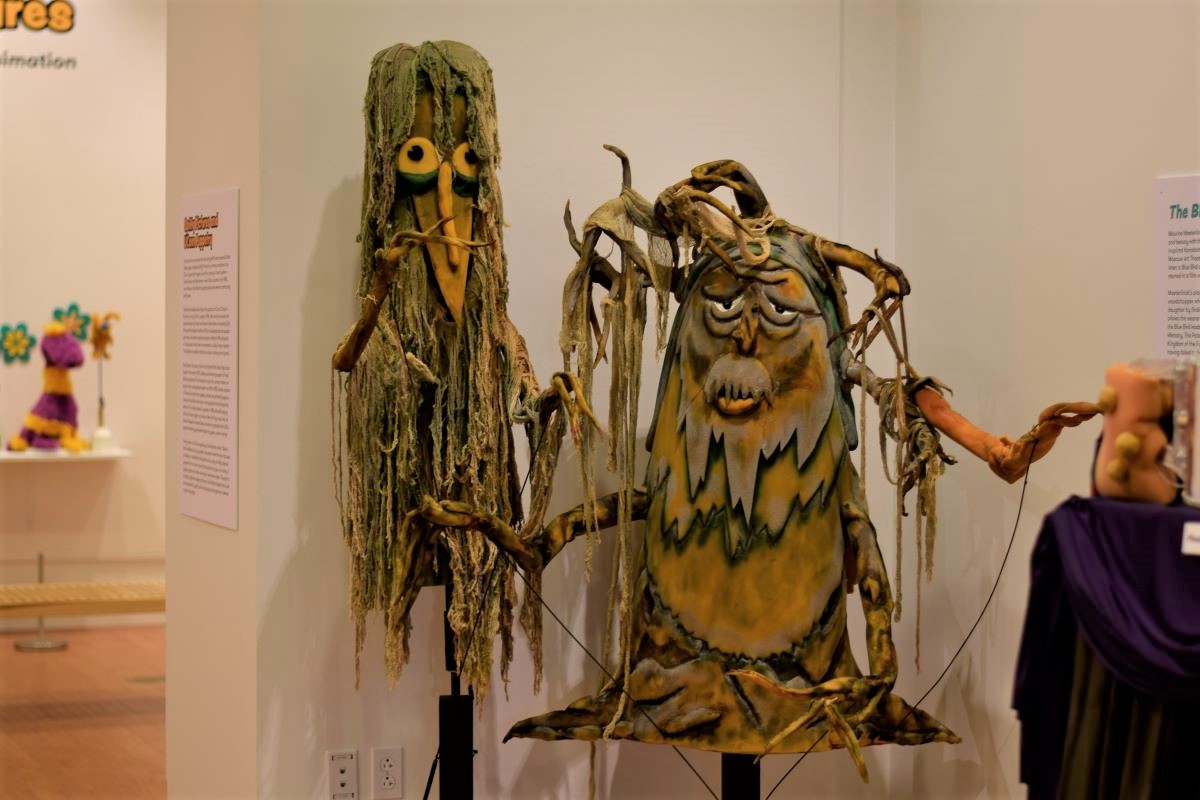
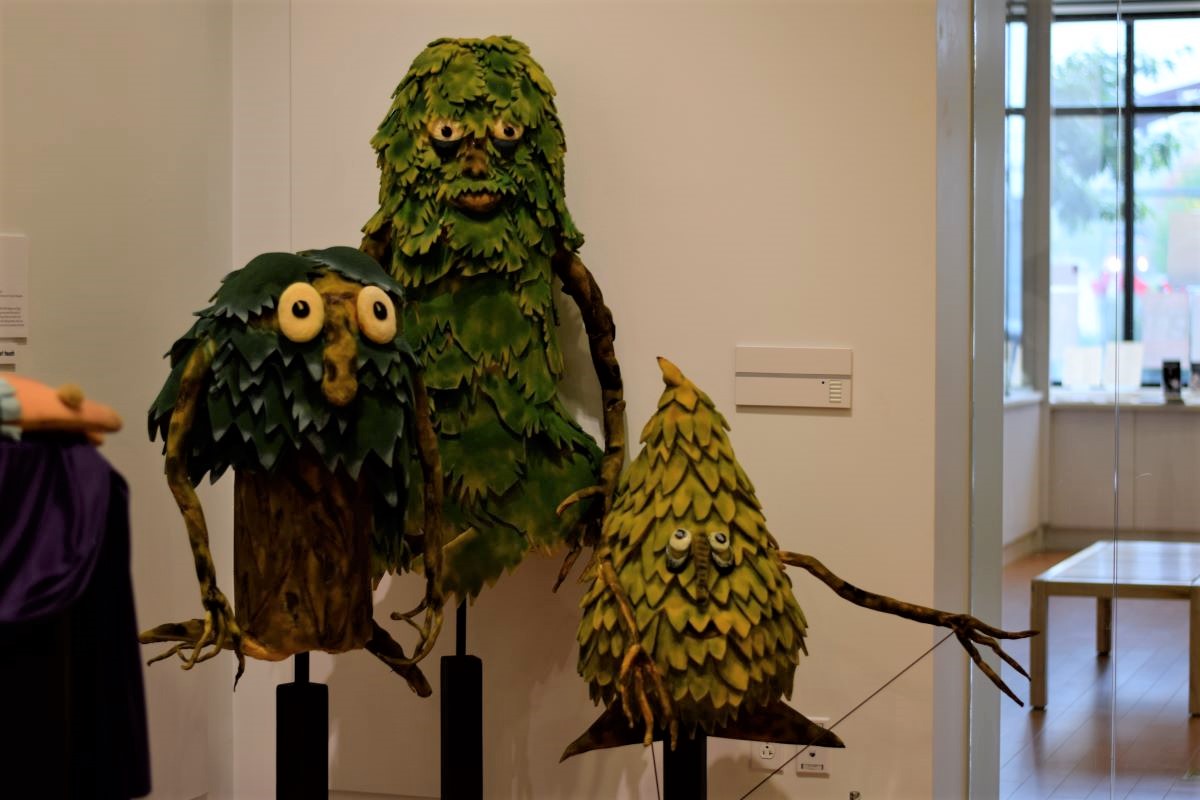
The Willow
The Cypress
The Elm
The Fir
The Beech
The Oak
The Blue Bird
1984
Rod puppets
Designed by Frank Ballard
Constructed by UConn School of Fine Arts Students
Foam rubber
In Act 2, Scene 1 of The Blue Bird, Mytyl and Tyltyl enter a forest, where they encounter the souls of various trees. Fearing they will be cut down, the souls of the trees attack the sibling heroes, who use their magic diamond to force the souls back into their trunks.
The Great Happiness of Drinking-When-No-Longer-Necessary
The Great Happiness of Eating-When-No-Longer-Necessary
The Great Happiness of Doing Nothing
The Great Happiness of Understanding Nothing
The Great Happiness of Being Rich
The Great Happiness of Sleeping-Longer-Than-Necessary
The Blue Bird
1984
Moving mouth puppets
Designed by Frank Ballard and Todd Hannert
Constructed by UConn School of Fine Arts Students
Foam rubber, cloth
In Act 2, Scene 2 of Frank Ballard’s production of The Bluebird, as Mytyl and her brother Tyltyl search for the elusive avian of the title, they reach an Enchanted Garden wherein dwell “all the Joys and all the Happinesses known to Mankind.” But, as can be seen here, the Happinesses are actually a bit gross, vulgar, and shallow--and they are not at all interested in the true happiness represented by the Blue Bird. To Mytyl and Tyltyl’s dismay, the banquet presided over by the Happinesses turns into a “grotesque bacchanal”.
